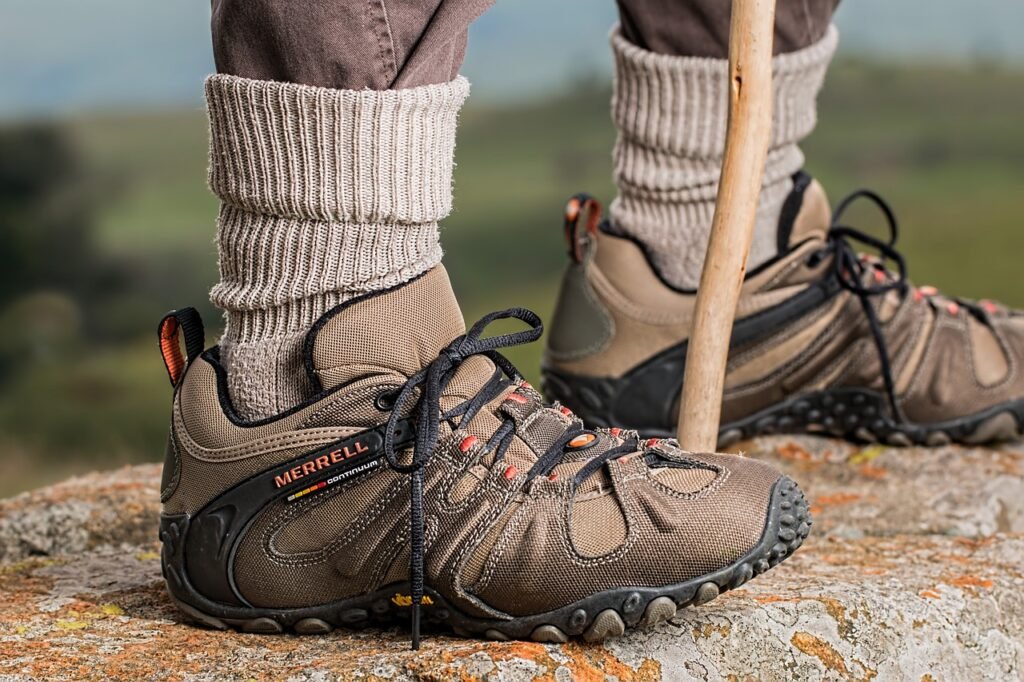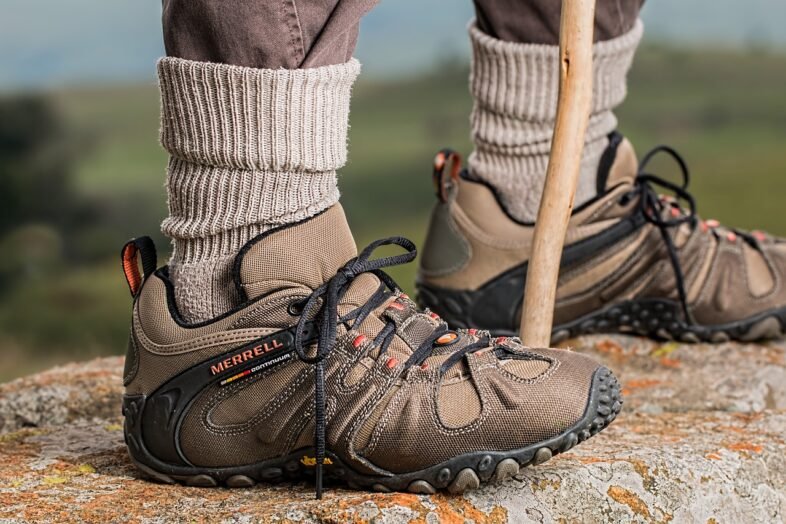If you’re looking to conquer those breathtaking long hill walks with ease, then it’s time to boost your endurance and stamina! Tackling steep inclines may seem challenging, but with the right approach, you’ll be conquering those peaks in no time. In this article, we’ll explore effective strategies for developing your endurance and stamina, so that you can enjoy those picturesque hill walks while feeling strong and unstoppable. So, lace up your hiking boots and let’s get started on this exciting journey towards fitness and adventure!

This image is property of pixabay.com.
Setting Goals
Setting goals is an essential part of any fitness journey, including developing endurance and stamina for long hill walks. By setting clear and specific goals, you provide yourself with a roadmap towards success and stay motivated throughout the process.
Determining Your Fitness Level
Before embarking on your endurance and stamina training, it is crucial to determine your current fitness level. This will help you create realistic and achievable goals tailored to your individual abilities. Consider factors such as your walking pace, the distance you can comfortably cover, and how your body responds to different intensities.
Setting Short-Term and Long-Term Goals
Once you have assessed your fitness level, it’s time to set both short-term and long-term goals for your hill walking journey. Short-term goals can be smaller milestones that you aim to achieve within a few weeks or months, such as increasing your walking distance by a specific amount. Long-term goals, on the other hand, can be broader objectives that you aspire to accomplish in a more extended period, like completing a challenging hill walk or participating in a walking event.
Cardiovascular Exercise
Cardiovascular exercise plays a vital role in improving your endurance and stamina for long hill walks. It helps strengthen your heart and lungs, allowing you to walk for longer periods without feeling fatigued. Here are some tips to incorporate cardiovascular exercise into your training routine:
Choose Activities That Increase Heart Rate
Engage in activities that elevate your heart rate and make you feel slightly out of breath. This can include brisk walking, jogging, cycling, swimming, or even using cardio machines at the gym like the elliptical or treadmill.
Start with Shorter Duration and Gradually Increase
If you’re just starting, it’s essential to begin with shorter bouts of cardiovascular exercise and gradually increase the duration as your fitness level improves. Start with 20-30 minutes and aim to add a few minutes each week until you can comfortably sustain longer sessions.
Incorporate Intervals and Inclines
To enhance your cardiovascular endurance and simulate hill walking conditions, incorporate intervals and inclines into your workouts. This can involve alternating between walking or jogging at a faster pace and slower recovery periods or finding routes that include uphill sections.
Strength Training
While cardiovascular exercise is crucial for endurance, strength training is equally essential for developing the muscles necessary to tackle long hill walks. Strengthening the targeted muscle groups will help you navigate challenging terrains more efficiently and reduce the risk of injuries. Consider the following tips for your strength training routine:
Target Muscles Used During Hill Walks
Focus on exercises that target the muscles frequently utilized during hill walks, such as the quadriceps, hamstrings, calves, glutes, and core. Squats, lunges, step-ups, calf raises, and planks are excellent choices to incorporate into your routine.
Include Exercises for Legs, Glutes, and Core
In addition to specific muscle groups, it’s crucial to strengthen your legs, glutes, and core as a whole. These muscle groups work together to provide stability, power, and endurance during hill walks. Exercises like deadlifts, bridges, and Russian twists can contribute to an overall strong and balanced body.
Incorporate Resistance Training
To challenge your muscles further and continue progressing, add resistance training to your strength routine. This can involve using dumbbells, resistance bands, or weight machines to increase the workload and promote muscle growth.
Flexibility and Stretching
Flexibility and stretching exercises are often overlooked but are essential for injury prevention and overall mobility. By improving joint mobility and range of motion, you can move more efficiently during hill walks. Consider the following tips for incorporating flexibility and stretching into your training:
Improve Joint Mobility and Range of Motion
Perform exercises that focus on improving joint mobility, such as ankle circles, hip openers, and shoulder rotations. These exercises will help you move more freely during your walks and reduce the risk of muscle imbalances or limitations.
Incorporate Dynamic and Static Stretches
Dynamic stretches, such as walking lunges or leg swings, should be performed before your walking sessions to warm up the muscles and increase blood flow. Static stretches, on the other hand, are better suited for after your walks to cool down and improve flexibility.
Include Stretches for Lower Body Muscles
Since hill walks heavily rely on the lower body, be sure to stretch the specific muscles used, such as the calves, hamstrings, quadriceps, and hip flexors. Hold each stretch for 15-30 seconds and repeat on both sides for a well-rounded flexibility routine.

This image is property of pixabay.com.
Cross Training
Cross training involves engaging in activities other than hill walking to further enhance your endurance and stamina. Incorporating different exercises and working different muscle groups can prevent overuse injuries and provide a well-rounded fitness routine. Consider the following tips for effective cross training:
Engage in Alternate Activities
Include alternatives to hill walking in your training plan, such as swimming, cycling, yoga, or even dancing. These activities provide variety while still promoting cardiovascular fitness and overall muscle strength.
Utilize Different Muscle Groups
Choose cross-training activities that utilize different muscle groups from hill walking to ensure a balanced and comprehensive workout routine. For example, swimming predominantly works the upper body and core, while cycling focuses on the lower body muscles.
Prevent Overuse Injuries
By incorporating cross training into your routine, you give your muscles used during hill walking a chance to recover and prevent overuse injuries. Overtraining can lead to muscle fatigue, decreased performance, and increased risk of injury, so incorporating different activities helps you avoid these pitfalls.
Proper Nutrition
Proper nutrition is a significant factor in developing endurance and stamina for long hill walks. The food you eat provides the energy and nutrients necessary for your body to perform optimally during exercise. Follow these tips to fuel your body effectively:
Fuel Your Body with Balanced Meals
Consume a range of nutrients by incorporating balanced meals into your diet. Include lean proteins, whole grains, fruits, vegetables, and healthy fats in each meal to provide your body with the necessary energy, vitamins, and minerals.
Consume Adequate Carbohydrates and Protein
Carbohydrates are your body’s primary source of fuel, so be sure to include complex carbs like whole grains, legumes, and fruits in your diet. Protein is crucial for muscle repair and growth, so include lean sources like chicken, fish, tofu, or beans to aid in your recovery.
Stay Hydrated During Walks
Dehydration can quickly lead to reduced performance and fatigue, so it’s essential to stay hydrated during your walks. Carry a water bottle with you and sip on it regularly, especially in warm environments or during longer walks. Consider electrolyte drinks to replenish lost minerals during intense training sessions.

This image is property of pixabay.com.
Rest and Recovery
Rest and recovery are just as important as the physical training itself. Giving your body adequate time to rest and repair is crucial for maximizing the benefits of your endurance and stamina development. Consider the following tips for proper rest and recovery:
Allow Time for Rest and Muscle Repair
Schedule regular rest days into your training plan to allow your body to recover and repair strained muscles. Aim to have at least one or two full days of rest per week to prevent overexertion and avoid overtraining.
Include Active Recovery Days
On rest days, consider incorporating active recovery activities such as gentle stretching, low-intensity walks, or yoga. These activities promote blood flow, aid in muscle recovery, and help prevent stiffness or soreness.
Listen to Your Body’s Signals
Pay attention to how your body feels during and after your walks. If you experience pain, excessive fatigue, or persistent soreness, it may be a sign that you need more rest or a lighter training load. Listen to your body’s signals and adjust your training plan accordingly.
Preparing for Hill Walks
Preparing your body and mind for long hill walks is crucial to ensure a safe and enjoyable experience. Here are some tips to consider as you prepare for your hill walking adventures:
Gradually Increase Intensity and Duration of Walks
As you progress in your training, gradually increase the intensity and duration of your walks. Gradual progression helps prevent injuries and allows your body to adapt to the demands of hill walking gradually.
Choose Appropriate Footwear and Gear
Invest in a pair of well-fitting and supportive walking shoes or hiking boots that provide adequate traction and stability. Additionally, equip yourself with weather-appropriate clothing, a backpack, water bottle, and any necessary safety gear like a compass or map.
Become Familiar with Terrain and Elevation
Before embarking on long hill walks, familiarize yourself with the terrain and elevation of your chosen routes. Research the difficulty level, incline gradients, and any potential hazards. This knowledge will help you prepare mentally and physically for your walks.
Mental Strategies
Endurance and stamina development for long hill walks also involve training your mind. Incorporate mental strategies into your routine to stay motivated, focused, and positive. Consider these tips for mental preparation:
Stay Motivated and Positive
Maintain a positive mindset and remind yourself of your goals and why you started your hill walking journey. Surround yourself with a supportive network of friends or fellow walkers who can provide encouragement and celebrate your achievements.
Use Visualization Techniques
Visualize yourself successfully completing your hill walks, overcoming challenges, and enjoying the beautiful surroundings. Visualization can help build confidence, reduce anxiety, and enhance your overall performance.
Practice Mindfulness During Walks
Be present in the moment during your walks by practicing mindfulness. Focus on your breathing, the rhythm of your steps, and the beauty of nature around you. Mindfulness can help reduce stress, increase enjoyment, and keep you mentally engaged throughout your walks.
Monitoring Progress
Monitoring your progress is essential to track your improvements, identify areas for further development, and make necessary adjustments to your training plan. Here are some effective ways to monitor your progress:
Track Your Walking Distance and Time
Keep a record of the distance you walk and the time it takes you to complete each walk. This will help you monitor your progress and gradually increase both your speed and distance with each outing.
Record How You Feel After Each Walk
Take note of how you feel physically and mentally after each walk. Did you experience any pain or discomfort? Did you find the walk challenging or enjoyable? This self-reflection will help you gauge your progress, make adjustments, and celebrate your achievements.
Make Adjustments to Your Training Plan
Regularly assess your training plan and make necessary adjustments based on your progress and any challenges encountered. Adjustments may include increasing the intensity of your walks, introducing new routes, or tweaking the frequency of your training sessions. Adaptability is key to continued progress.
By following these comprehensive guidelines for developing endurance and stamina for long hill walks, you’ll be well on your way to conquering challenging terrains, enjoying breathtaking views, and experiencing the rewards of an active and healthy lifestyle. Remember, progress takes time and dedication, so be patient with yourself and enjoy the journey. Lace up your walking shoes, embrace the hills, and let the adventure begin!
Hi there! I’m the Editor, experienced outdoor development specialist, mountaineer and the mind behind ‘Country Rambler.’ I’m thrilled to welcome you to our website, your go-to destination for all things hill walking and rambling. Whether you’re an experienced adventurer or just dipping your toes into the great outdoors, I’ve got you covered. From providing guidance on essential gear, like boots and jackets, to sharing trail tips that range from peaceful paths to challenging peaks, I’ve got everything you need to embark on your next adventure. Stay in the loop with our fresh news updates and trail information. So, lace up those boots and join me as we explore the breathtaking landscapes together. Happy wandering!


